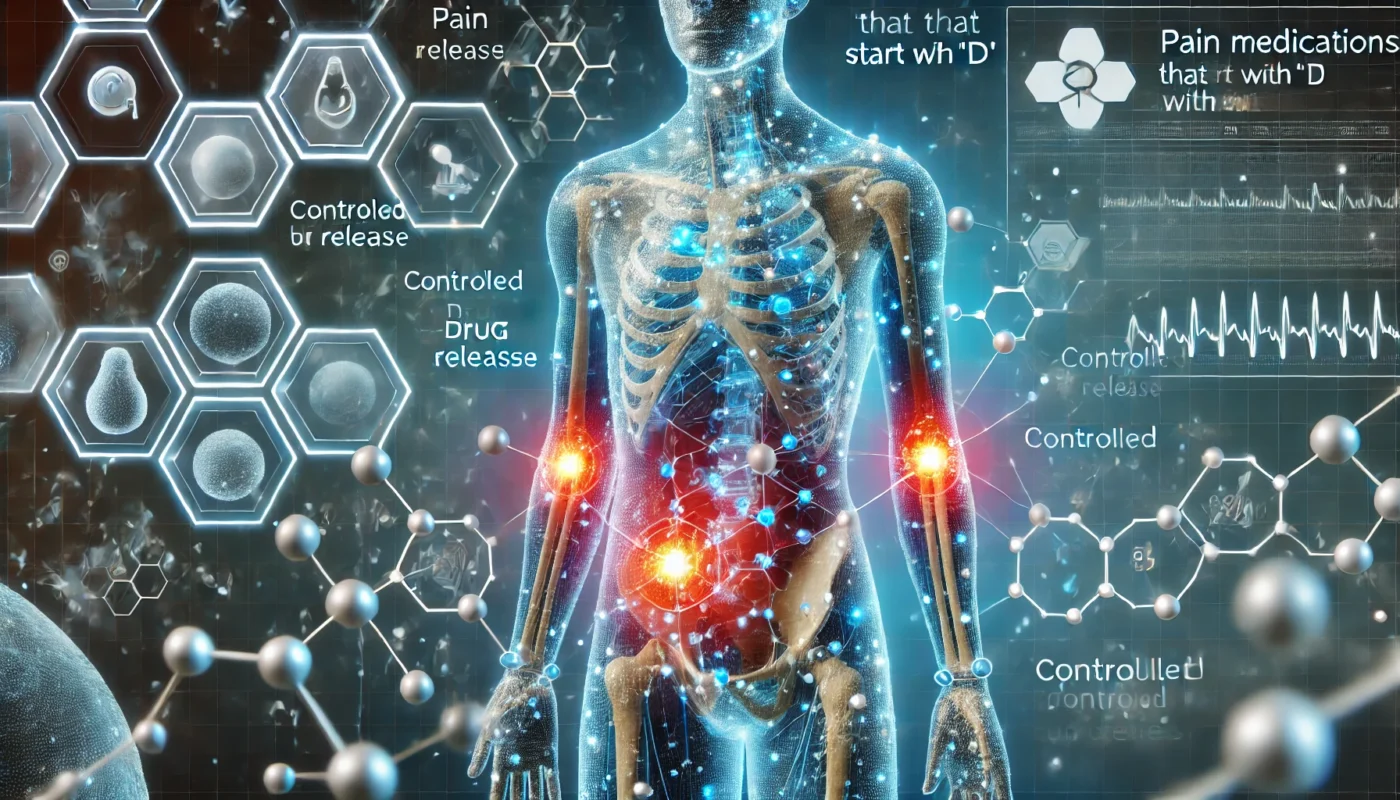Pain medications, or analgesics, are a diverse group of drugs used to relieve pain. They range from over-the-counter options to prescription medications, each with its own mechanism of action, efficacy, and side effect profile. Understanding how these medications work and their potential impact on the body is crucial for effective pain management.
You may also like: Understanding Long-Term Pain Relief Options
Types of Pain Medications
Pain medications can be broadly categorized into three groups:
Non-opioid Analgesics
Non-opioid analgesics include common over-the-counter drugs like acetaminophen and nonsteroidal anti-inflammatory drugs (NSAIDs) such as ibuprofen. These medications are typically used for mild to moderate pain and work by blocking pain signals at the source of inflammation or injury. They are generally safe when used as directed, but long-term or excessive use can lead to complications such as liver damage or gastrointestinal issues.
Opioid Analgesics
Opioid analgesics are potent drugs prescribed for moderate to severe pain. They include medications such as morphine, oxycodone, and hydromorphone (Dilaudid). These drugs work by binding to opioid receptors in the brain and spinal cord, altering the perception of pain. However, due to their high potential for addiction and overdose, they are usually reserved for severe pain that doesn’t respond to other treatments.
Adjuvant Analgesics
Adjuvant analgesics are medications primarily used for conditions other than pain but can provide pain relief in certain situations. Examples include certain antidepressants and anticonvulsants, which can be effective for neuropathic pain. These drugs can be particularly useful in managing chronic pain conditions, offering an alternative when conventional analgesics are inadequate.
Mechanisms of Action
Understanding the mechanisms of action of pain medications is essential in choosing the right drug for a specific type of pain. Non-opioid analgesics typically inhibit enzymes responsible for inflammation, whereas opioids act on the central nervous system to modify pain perception. Adjuvant analgesics may affect neurotransmitter levels, contributing to pain relief in indirect ways.
Side Effects and Safety Concerns
Each category of pain medication has its own set of potential side effects and safety concerns. Non-opioid analgesics, particularly NSAIDs, can cause gastrointestinal bleeding and cardiovascular issues. Opioids, while effective, carry risks of addiction, respiratory depression, and other serious side effects. Adjuvant analgesics may cause dizziness, fatigue, or mood changes. It is crucial to balance the benefits and risks when selecting a medication.
Diving into the “D” Medications
Medications starting with “D” have specific roles in pain management, each with unique properties and considerations.
Dilaudid
Dilaudid, also known as hydromorphone, is a potent opioid analgesic used for managing severe pain that requires an opioid analgesic and for which alternative treatments are inadequate. It acts on the central nervous system to relieve pain and can be administered orally or via injection.
Mechanism of Action
Dilaudid works by binding to the mu-opioid receptors in the brain and spinal cord, altering the perception and response to pain. This action not only reduces the intensity of pain but can also induce a state of relaxation and euphoria, which contributes to its potential for misuse.
Clinical Applications
Dilaudid is primarily used in acute pain scenarios, such as post-surgical recovery or in cancer-related pain management. Its rapid onset and potency make it a valuable option when immediate pain relief is necessary. However, due to its high potential for addiction, its use is carefully controlled and monitored.
Risks and Precautions
As with all opioids, Dilaudid carries a risk of addiction, misuse, and potential overdose. Common side effects include drowsiness, dizziness, constipation, nausea, and vomiting. It is crucial to use this medication under strict medical supervision. Patients should also be aware of its interactions with other central nervous system depressants, which can exacerbate side effects.
Demerol
Demerol, or meperidine, is another opioid analgesic used for moderate to severe pain relief. It works by altering the perception of pain in the brain. While effective, its use has declined due to the availability of better-tolerated alternatives.

Mechanism of Action
Demerol acts similarly to other opioids by binding to opioid receptors and inhibiting the transmission of pain signals. It has a relatively short duration of action, which can necessitate frequent dosing for sustained pain control.
Historical Context and Usage
Historically, Demerol was widely used for various types of pain, including labor pain and postoperative discomfort. However, due to its short half-life and the risk of accumulation leading to seizures, its use has diminished in favor of safer options.
Challenges and Considerations
Demerol can cause dizziness, lightheadedness, and sedation. Long-term use is not recommended due to the risk of neurotoxicity. It’s important to discuss potential interactions with other medications with a healthcare provider. Additionally, individuals with renal impairment should avoid Demerol due to the risk of metabolite accumulation.
Diclofenac
Diclofenac is a nonsteroidal anti-inflammatory drug (NSAID) used to treat mild to moderate pain, inflammation, and swelling. Available in various forms, including tablets, gels, and patches, diclofenac is commonly used for conditions like arthritis and musculoskeletal pain.
Mechanism of Action
Diclofenac works by inhibiting the cyclooxygenase enzymes (COX-1 and COX-2), which play a role in the synthesis of prostaglandins, compounds involved in inflammation and pain. By reducing prostaglandin production, diclofenac effectively reduces pain and inflammation at the site of injury or irritation.
Versatility and Applications
Diclofenac’s versatility allows it to be used in a variety of forms, from oral tablets to topical gels, providing flexibility in treatment approaches. This makes it particularly useful for localized pain conditions, such as osteoarthritis or soft tissue injuries, where targeted treatment is beneficial.
Safety Profile and Concerns
NSAIDs, including diclofenac, may increase the risk of heart attack or stroke, especially with long-term use or in individuals with pre-existing cardiovascular conditions. Gastrointestinal issues such as ulcers and bleeding are also potential risks. Patients with a history of heart disease or gastrointestinal problems should use NSAIDs with caution, and healthcare providers may recommend concurrent use of protective medications like proton pump inhibitors.
Understanding the Mechanisms
To effectively manage pain, it is essential to understand how these medications work at a physiological level.
Opioid Analgesics
Opioids like Dilaudid and Demerol bind to opioid receptors in the brain and spinal cord, reducing the perception of pain. They are highly effective but come with significant risks, including tolerance, dependence, and potential for abuse.
Receptor Binding and Pain Modulation
Opioids primarily target the mu-opioid receptors, which are critical in modulating pain perception. By activating these receptors, opioids not only diminish the sensation of pain but can also lead to feelings of euphoria and relaxation, contributing to their addictive potential.
Risks of Tolerance and Dependence
Chronic use of opioids can lead to tolerance, where increasing doses are needed to achieve the same level of pain relief. Dependence can also develop, characterized by withdrawal symptoms if the medication is abruptly discontinued. These challenges necessitate careful monitoring and often require strategies for tapering or rotating medications.
Strategies to Mitigate Risks
To minimize the risks associated with opioids, healthcare providers often employ strategies such as prescribing the lowest effective dose for the shortest duration necessary. Patient education on the risks and safe storage of medications is also critical in preventing misuse and accidental overdoses.
Nonsteroidal Anti-inflammatory Drugs (NSAIDs)
NSAIDs, such as diclofenac, work by inhibiting enzymes (COX-1 and COX-2) responsible for producing prostaglandins, compounds that promote inflammation, pain, and fever. By reducing prostaglandins, NSAIDs alleviate pain and inflammation.
Enzyme Inhibition and Pain Relief
The inhibition of cyclooxygenase enzymes by NSAIDs results in decreased production of prostaglandins, which are mediators of inflammation and pain. This action not only provides pain relief but also addresses the underlying inflammatory process, making NSAIDs particularly effective for conditions like arthritis.
Considerations for Long-term Use
While effective, long-term use of NSAIDs can lead to adverse effects such as gastrointestinal bleeding and cardiovascular events. Patients at higher risk for these complications may require additional protective measures or alternative therapies.
Balancing Efficacy and Safety
In managing pain with NSAIDs, it is crucial to balance their efficacy in pain relief with the potential for adverse effects. This often involves tailoring the choice of NSAID and dosing regimen to the individual patient’s needs and risk profile.

Practical Advice for Safe Use
Safe use of pain medications involves careful consideration of various factors to optimize benefits while minimizing risks.
Consult with Healthcare Providers
Before starting any pain medication, especially opioids, consult with a healthcare provider to assess the necessity, potential benefits, and risks. This conversation should also cover any existing medical conditions and other medications being taken.
Importance of Medical Guidance
Healthcare providers play a crucial role in determining the most appropriate pain management strategy. They can evaluate the patient’s overall health status, previous responses to medications, and potential interactions with other treatments to provide tailored recommendations.
Individualized Pain Management Plans
Developing an individualized pain management plan is essential to address the unique needs and circumstances of each patient. This plan may involve a combination of pharmacological and non-pharmacological approaches, with regular reassessments to ensure effectiveness and safety.
Monitoring and Adjusting Treatment
Ongoing monitoring of the patient’s response to treatment and any side effects is vital for optimizing pain management. Adjustments to the medication regimen may be necessary based on changes in the patient’s condition or the emergence of new concerns.
Monitor for Side Effects
While taking pain medications, be vigilant about side effects. Report any adverse reactions to your healthcare provider promptly. For opioids, be particularly aware of signs of misuse or dependency.
Recognizing Early Warning Signs
Early recognition of side effects or signs of misuse can prevent more serious complications. Patients should be informed about common side effects and encouraged to report any unusual symptoms or changes in their condition promptly.
Addressing Adverse Reactions
If adverse reactions occur, healthcare providers can offer solutions such as dose adjustments, switching medications, or adding supportive therapies to mitigate side effects. Timely intervention can enhance the overall safety and effectiveness of pain management.
Educating Patients and Caregivers
Educating patients and caregivers about the risks and proper use of pain medications is a critical component of safe medication management. This includes guidance on storage, disposal, and recognizing signs of overdose or dependency.
Alternative and Complementary Approaches
Consider integrating holistic and alternative pain management strategies alongside traditional medications. These can include physical therapy, acupuncture, mindfulness meditation, and dietary adjustments, which can enhance overall pain management without additional pharmacological burden.
Exploring Non-pharmacological Options
Non-pharmacological therapies can play a significant role in pain management, offering additional relief without the risks associated with medications. Techniques such as physical therapy and acupuncture can address specific pain issues and improve overall function.
Benefits of Mindfulness and Relaxation
Mindfulness meditation and relaxation techniques can help reduce the perception of pain and improve coping strategies. These approaches can be particularly beneficial for chronic pain conditions, where stress and anxiety often exacerbate symptoms.
Nutritional and Lifestyle Modifications
Dietary adjustments and lifestyle changes can also contribute to pain management. Anti-inflammatory diets, regular physical activity, and adequate sleep can support overall health and reduce the impact of pain on daily life.

Conclusion
Understanding the nuances of pain medications that start with the letter “D” can empower individuals in their pain management journey. By recognizing the benefits and risks associated with each medication, and considering holistic approaches, one can make informed decisions that promote health and well-being.
In the ever-evolving landscape of pain management, staying informed and engaged with healthcare providers is key to optimizing treatment outcomes and enhancing quality of life. Whether you are a fitness enthusiast, health devotee, or medical patient, the right knowledge can lead to improved management of pain and a greater sense of control over your health.
Further Reading:
NSAIDs, pain management, cyclooxygenase, inflammation, arthritis, long-term use, gastrointestinal bleeding, cardiovascular events, individualized care, healthcare providers, non-pharmacological options, mindfulness, dietary adjustments, alternative therapies, patient education, side effects, opioid safety, holistic approaches, chronic pain, lifestyle modifications
Important Note: The information contained in this article is for general informational purposes only, and should not be construed as health or medical advice, nor is it intended to diagnose, prevent, treat, or cure any disease or health condition. Before embarking on any diet, fitness regimen, or program of nutritional supplementation, it is advisable to consult your healthcare professional in order to determine its safety and probable efficacy in terms of your individual state of health.
Regarding Nutritional Supplements Or Other Non-Prescription Health Products: If any nutritional supplements or other non-prescription health products are mentioned in the foregoing article, any claims or statements made about them have not been evaluated by the U.S. Food and Drug Administration, and such nutritional supplements or other health products are not intended to diagnose, treat, cure, or prevent any disease.

